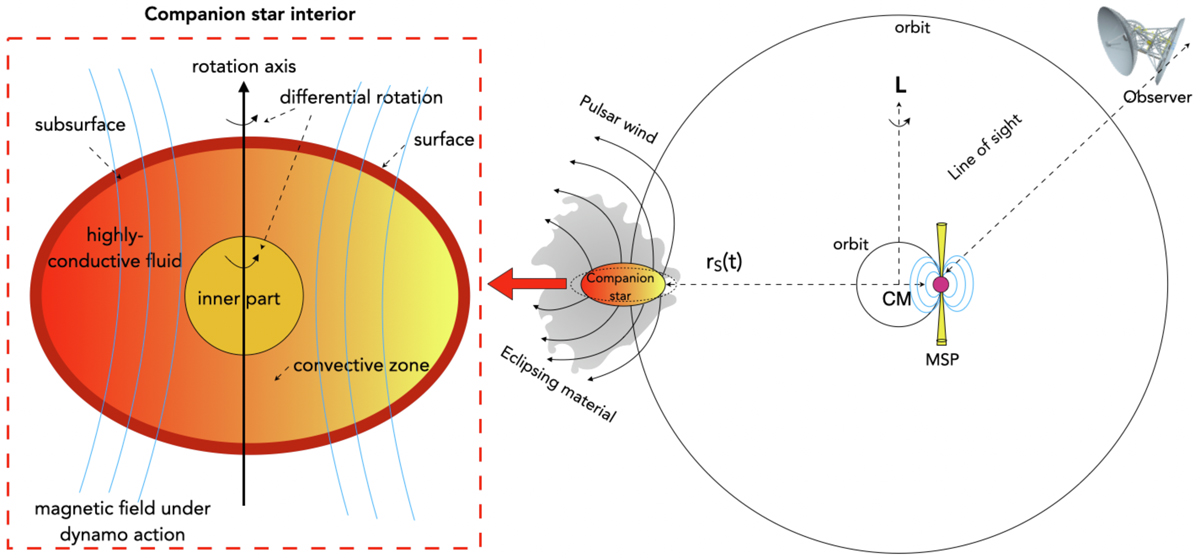Fig. 1.

Download original image
Illustration of typical spider binary system. An MSP and a companion star are in a tidally locked configuration, moving in synchronous rotations on quasi-circular and tight orbits. They are separated by a distance of rs(t) in a plane orthogonal to the orbital angular-momentum vector L, which is conserved during the binary system’s motion. The irradiation-driven wind from the MSP heats through a tidal dissipation the companion star, which starts to evaporate, thus losing mass. This is the eclipsing material, which acts as an obstacle to the radio signal detected by a telescope located far from the binary system. In the dashed red box we sketch the companion star’s interior. This zone is characterised by a convective envelope, where the fluid in it is highly conductive. Furthermore, the pulsar wind triggers the differential rotation of the companion star, which induces a magnetic activity through a dynamo action. The subsurface magnetic field is responsible for breaking the hydrostatic equilibrium inside the star, inducing quadrupole moment changes. We note that the external magnetic field is expected to be locally poloidal, while the sub-surface field is toroidal.
Current usage metrics show cumulative count of Article Views (full-text article views including HTML views, PDF and ePub downloads, according to the available data) and Abstracts Views on Vision4Press platform.
Data correspond to usage on the plateform after 2015. The current usage metrics is available 48-96 hours after online publication and is updated daily on week days.
Initial download of the metrics may take a while.


